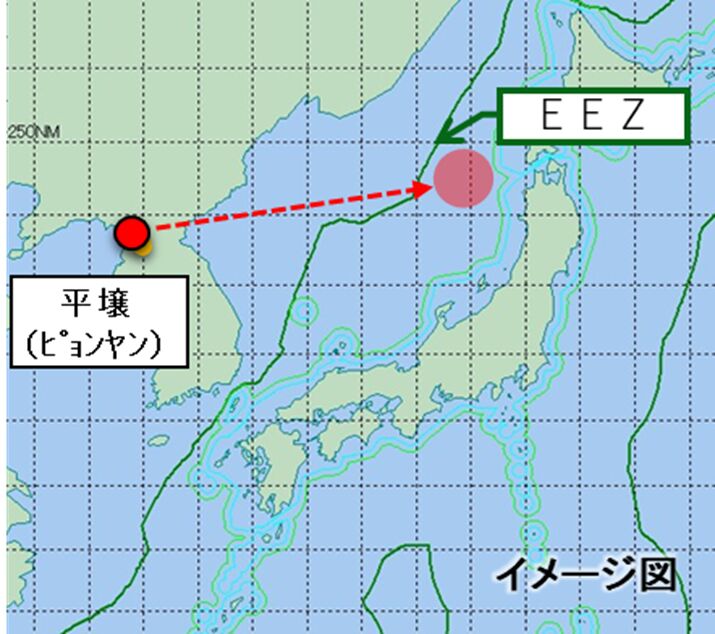
Japan's MoD said the ICBM launched by North Korea on 24 March landed within its exclusive economic zone. (Japan MoD)
North Korea confirmed on 25 March that it has test-launched its new Hwaseong-17 (also spelt Hwasong-17) intercontinental ballistic missile (ICBM).
It is the country's first launch of an ICBM since November 2017 and signals the end of a self-imposed suspension on the development of such weapons introduced in 2018.
Pyongyang's Korean Central News Agency (KCNA) said the Hwaseong-17 – the largest that North Korea has developed – was trialled by the Korean People's Army (KPA) Strategic Force on 24 March.
KCNA said the missile was launched “from a high angle” from a site near Pyongyang's international airport in the district of Sunan. It said the missile flew 1,090 km at a top altitude of 6,248 km before landing in the East Sea, marking the longest range that a North Korean ICBM has achieved.
KCNA said the launch demonstrated that “all essential elements of the weapon accurately achieved their design requirements”, and that the weapon could be deployed reliably “in wartime conditions”.
Citing North Korean leader Kim Jong-un, KCNA said the country's development of the missile is part of its preparations for a “long-term confrontation with United States imperialism”.
“The new strategic weapon of [North Korea] will make the whole world clearly aware of the power of our strategic armed forces once again,” he added.
South Korea's Joint Chiefs of Staff (JCS) said it estimated that the missile achieved a maximum altitude of 6,200 km and that it travelled a distance of 1,080 km.
Looking to read the full article?
Gain unlimited access to Janes news and more...







